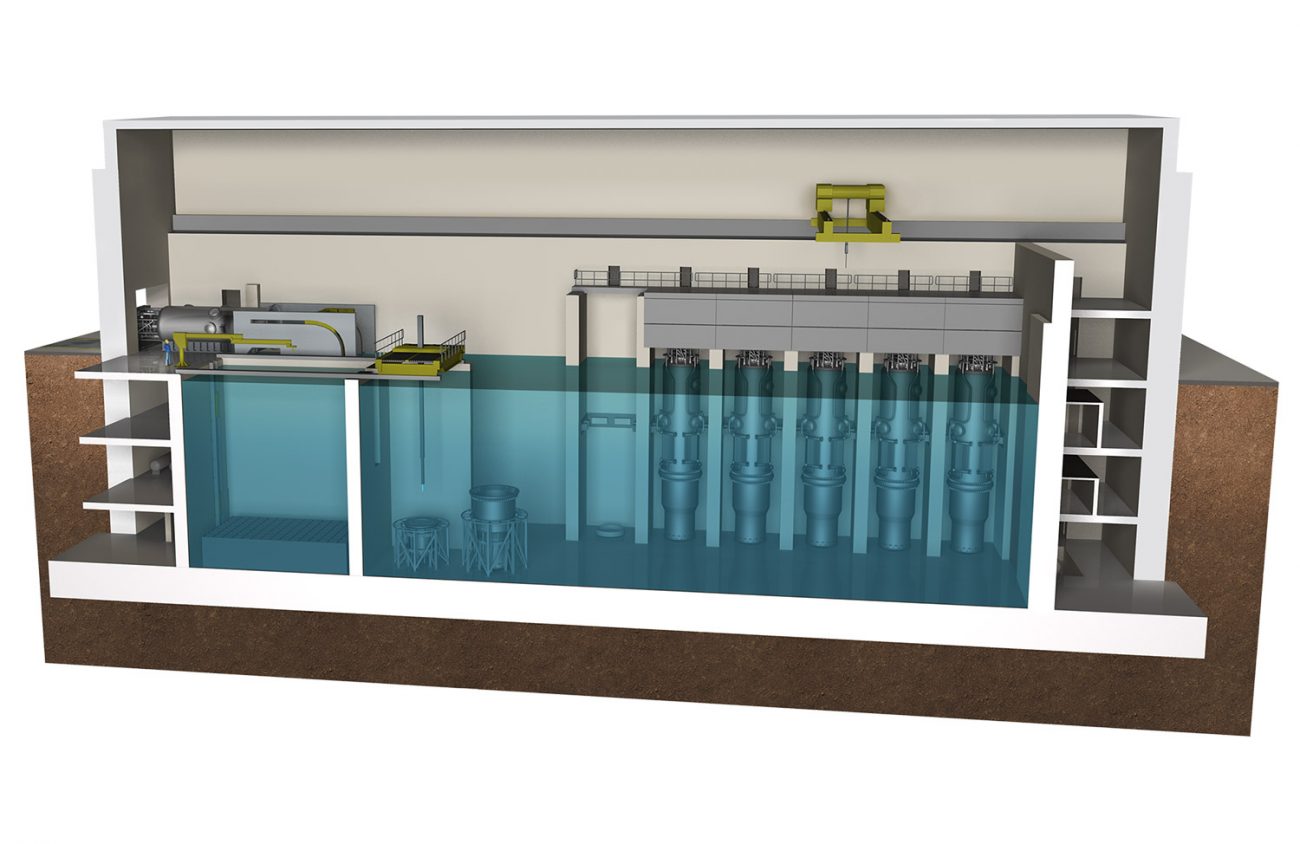Eugene Water & Electric Board has released its 2023 Integrated Resource Plan (IRP), and it showcases an energy option EWEB hasn’t talked about investing in since the 1960s and ’70s. But now in 2023 it has re-entered the conversation about nuclear power in the form of small modular nuclear reactors (SMRs). The IRP is a document that projects how the utility will handle its energy resources for the next 20 years.
According to a letter from EWEB General Manager Frank Lawson introducing the IRP, “The energy industry is undergoing enormous change. In recent years, the cost of batteries, wind, and solar generation have declined, making them among the least-cost energy sources available. But substantial hurdles remain in integrating these resources into the electric grid in an efficient, cost-effective way.”
EWEB’s IRP cites a possible need for SMRs, which it says would create minimal emissions and be used for extended periods of time. The role of these reactors would be to pursue EWEB’s goal of 95 percent carbon-free electricity by 2030. Support would come from the federal government’s Inflation Reduction Act (IRA) of August 2022, which the IRP says includes billions of dollars of tax incentives and rebates for cleaner and more renewable technologies.
Portland-based company NuScale Power, which has worked together with Oregon State, has passed the sixth and final step in the U.S. Nuclear Regulatory Commission’s safety test, allowing NuScale to continue with its plans to generate facilities and meaning that SMRs could be a more viable option in the future.
The goal of the IRA would be to make renewable resources cheaper while also increasing the demand for electricity. The IRA money is expected to lower the costs of solar, wind, SMRs and batteries for the next decade, according to EWEB’s plan.
One factor affecting implementing SMRs in Oregon is the Oregon Voter Approval for Nuclear Waste Facilities Amendment of 1980, which delays when nuclear power plants in Oregon can be built until the federal government creates a permanent waste site. Bills have been introduced to repeal the ballot measure, but the most recent bill from the 2023 legislative session didn’t make it out of committee.
Sierra Club’s senior campaign representative Dylan Plummer says EWEB has a golden opportunity to use the funding from the IRA on more renewable sources of energy as opposed to nuclear energy. “EWEB is at a crossroads,” Plummer says. “Will the utility meet the moment and begin building a just transition, investing in public renewables and protecting ratepayers, or will it maintain the status quo while pursuing risky and polluting nuclear energy at the expense of our community and our climate?”
Lawson tells Eugene Weekly that SMRs may not even be implemented despite the IRP saying, “… the IRA is expected to promote development of new clean technologies like battery storage and SMRs.” \
Plummer says that he and other activists have had a straightforward and constructive relationship with EWEB. In an August 10 letter to EWEB, Plummer and other activists wrote, “Critically, the utility must prioritize investments in publicly owned renewable energy generation (including geothermal development), battery storage and load management strategies rather than polluting small modular reactors and biomass generators, or contracts with fossil fuel power plants that will keep our community from meeting our emissions reduction goals.”
On July 11, activists testified before EWEB expressing concern for where the nuclear waste will be stored. Ward 7 Eugene City Councilor Lyndsie Leech says in an email, “We are in a climate crisis. Our city has a moral obligation to take bold action to transition to clean, publicly owned renewable energy, while protecting ratepayers and creating good union jobs. There is no time like the present.”
Lawson says he believes that he and the community can reach a better understanding of the IRP and EWEB’s future goals as they develop. “Part of our role is to make sure that we’re understanding all the different future conditions so that we can make an informed decision and work with our community,” he says.
More information can be found at EWEB.org/projects/integrated-resource-plan.
This story has been updated to reflect that EWEB discussed building its own nuclear power plant in the 1960s but also that it had a share of the Trojan nuclear power plant that it assigned to BPA in 1980.
